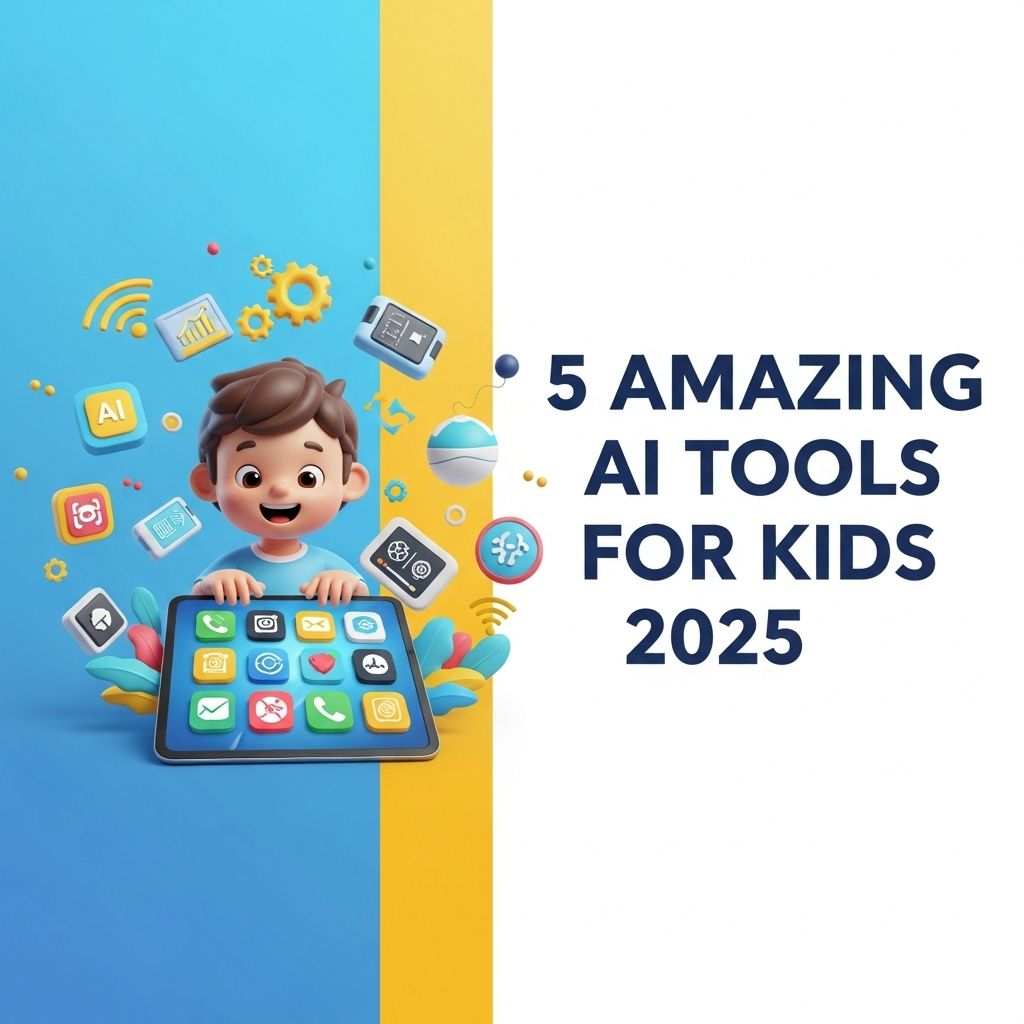The rapid advancement of artificial intelligence has opened up exciting opportunities for children to learn, explore, and create in innovative ways. As we look towards 2025, several AI tools are making waves in the educational landscape, offering interactive and engaging experiences that not only stimulate a child’s imagination but also enhance their learning capabilities. In this article, we will delve into five amazing AI tools that are set to revolutionize the way children interact with technology, while also promoting creativity and critical thinking.
1. AI-Powered Educational Games
Combining play with learning, AI-powered educational games are designed to adapt to each child’s individual learning style and pace. These games utilize machine learning algorithms to analyze a child’s performance and provide personalized feedback.
Features:
- Adaptive learning paths based on performance metrics.
- Real-time feedback to encourage improvement.
- Engaging storylines that keep kids hooked.
- Multiplayer options to foster collaboration among peers.
Some popular examples include:
- Kahoot! – An interactive quiz platform that uses AI to tailor quizzes according to the learners’ needs.
- Prodigy Math – A math game that adjusts difficulty based on a student’s abilities.
2. Virtual Tutors
Virtual tutoring has gained traction as a reliable and flexible learning method. AI-driven virtual tutors can provide 24/7 access to educational support, helping children with homework and challenging concepts.
How They Work:
These tutors use natural language processing (NLP) and machine learning to understand and respond to student inquiries.
- They can analyze student interactions to identify strengths and weaknesses.
- Provide customized learning materials and exercises.
- Collate data to track progress effectively.
Some noteworthy virtual tutor platforms are:
| Platform | Key Features |
|---|---|
| Duolingo | Language learning with AI-driven lessons and reminders. |
| IBM Watson Tutor | Personalized study plans and interactive Q&A sessions. |
3. Creative AI Tools for Art and Design
Art and design are crucial for fostering creativity. AI tools that assist in artistic endeavors can help children explore different mediums and styles without the constraints of traditional methods.
Examples of Creative Tools:
- DeepArt.io – Turns photos into artworks using styles of famous artists.
- Canva – An online design tool enhanced by AI, helping children create stunning graphics and presentations easily.
4. Coding Assistants
As the demand for coding skills continues to rise, AI-powered coding assistants are proving to be invaluable for children looking to delve into programming.
Benefits:
- Interactive coding tutorials tailored to the user’s skill level.
- Instant error correction and code suggestions.
- Gamified learning experience to maintain engagement.
Popular coding assistants include:
- Scratch – A visual programming language that helps kids learn coding fundamentals.
- CodeCombat – An online platform where students learn coding through games.
5. Robotics Kits
Robotics kits that incorporate AI provide hands-on learning experiences that encourage problem-solving and critical thinking. Children can build their own robots and program them to perform various tasks.
Key Robotics Kits:
- LEGO Mindstorms – Combines LEGO building with programmable robotics.
- Ozobot – A small robot that promotes coding through color sequences.
These kits not only teach basic principles of robotics but also introduce concepts of AI in a fun and engaging way.
Conclusion
As we approach 2025, the integration of AI tools into children’s learning environments is set to create unprecedented opportunities for education and creativity. From virtual tutors that provide personalized support to robotics kits that inspire hands-on learning, these tools empower children to embrace technology and develop skills that will be essential in the future.
Encouraging children to explore and utilize these tools can lead to a more enriched learning experience, fostering a generation that is not only tech-savvy but also creative and innovative problem solvers.
FAQ
What are the best AI tools for kids in 2025?
In 2025, some of the best AI tools for kids include interactive coding platforms, educational chatbots, creative design apps, AI-driven game development tools, and personalized learning assistants.
How can AI tools benefit children’s learning?
AI tools can enhance children’s learning by providing personalized educational experiences, fostering creativity, encouraging problem-solving skills, and making learning more engaging and interactive.
Are AI tools safe for kids to use?
Yes, as long as they are age-appropriate and monitored by parents or educators, AI tools can be safe for kids. It’s important to choose reputable platforms that prioritize children’s online safety.
Can AI tools help kids learn coding?
Absolutely! Many AI tools in 2025 are designed to teach kids coding through fun and interactive methods, making it easier for them to grasp programming concepts.
What age group is suitable for using AI tools?
AI tools can cater to a wide range of age groups, but many are specifically designed for children aged 5 to 15, allowing them to learn and explore at their own pace.




